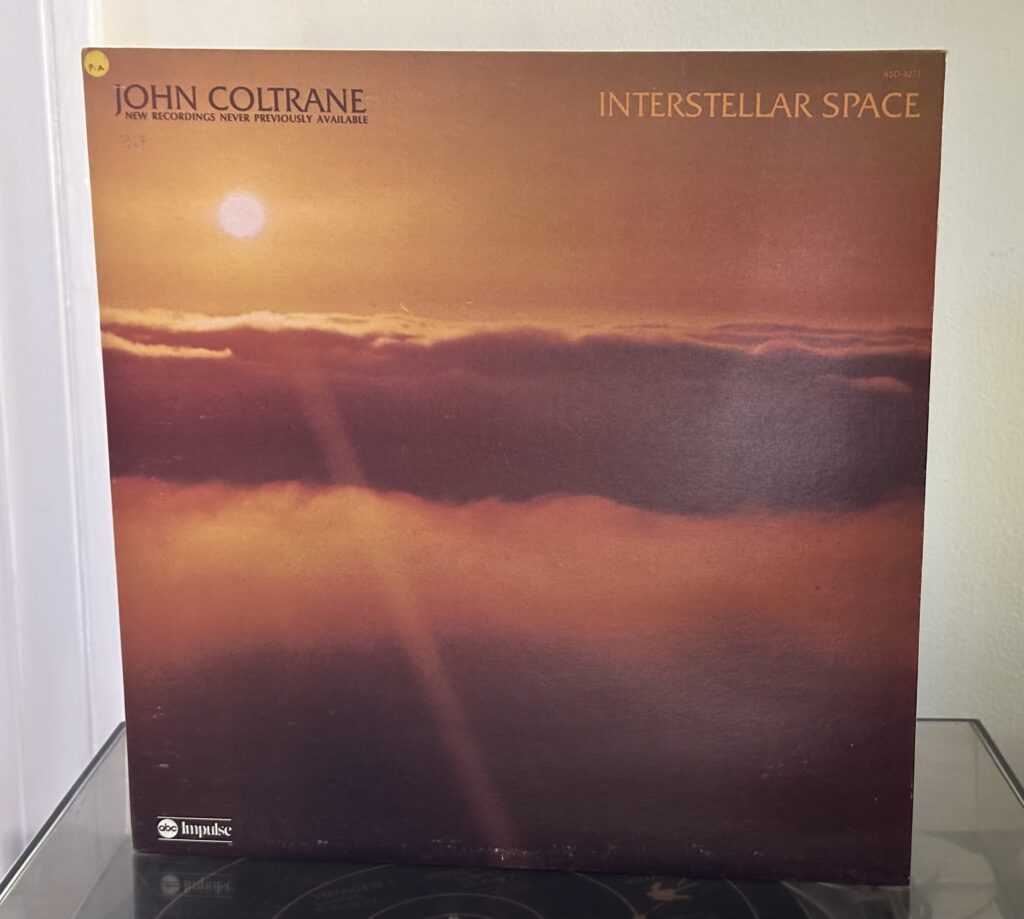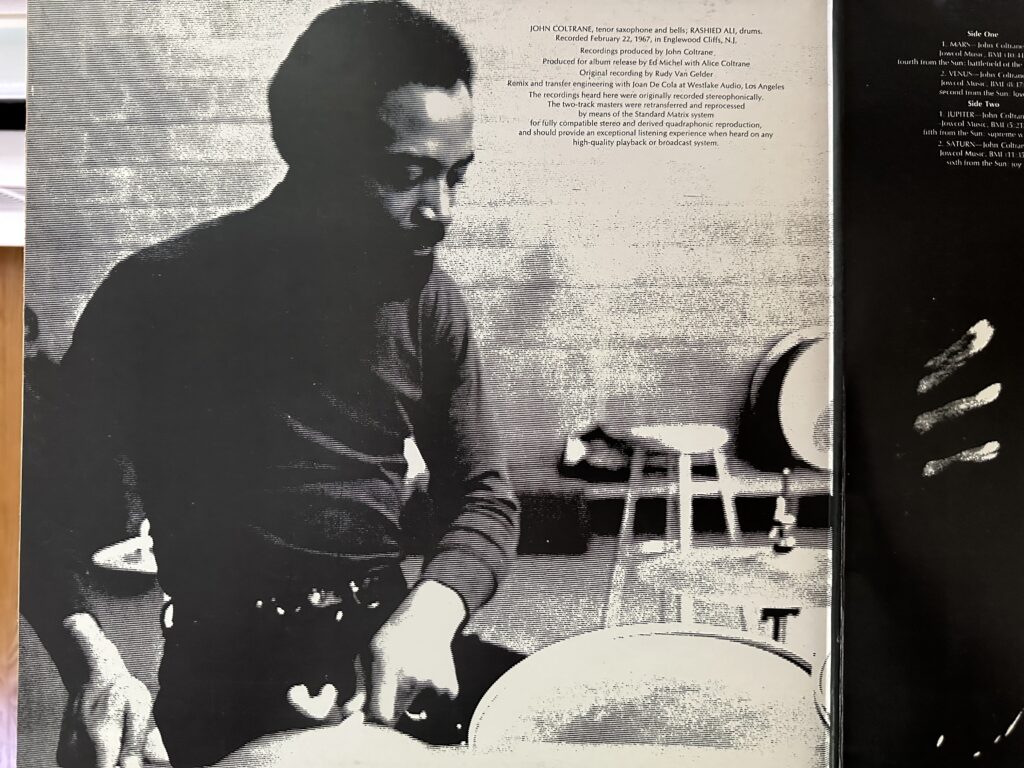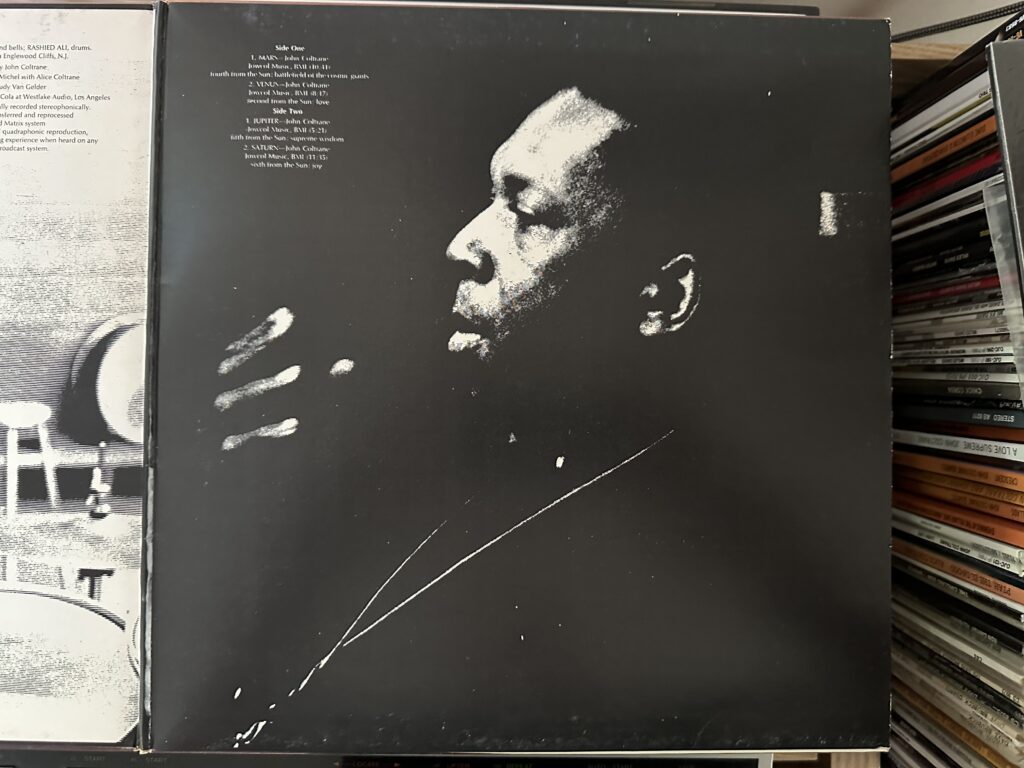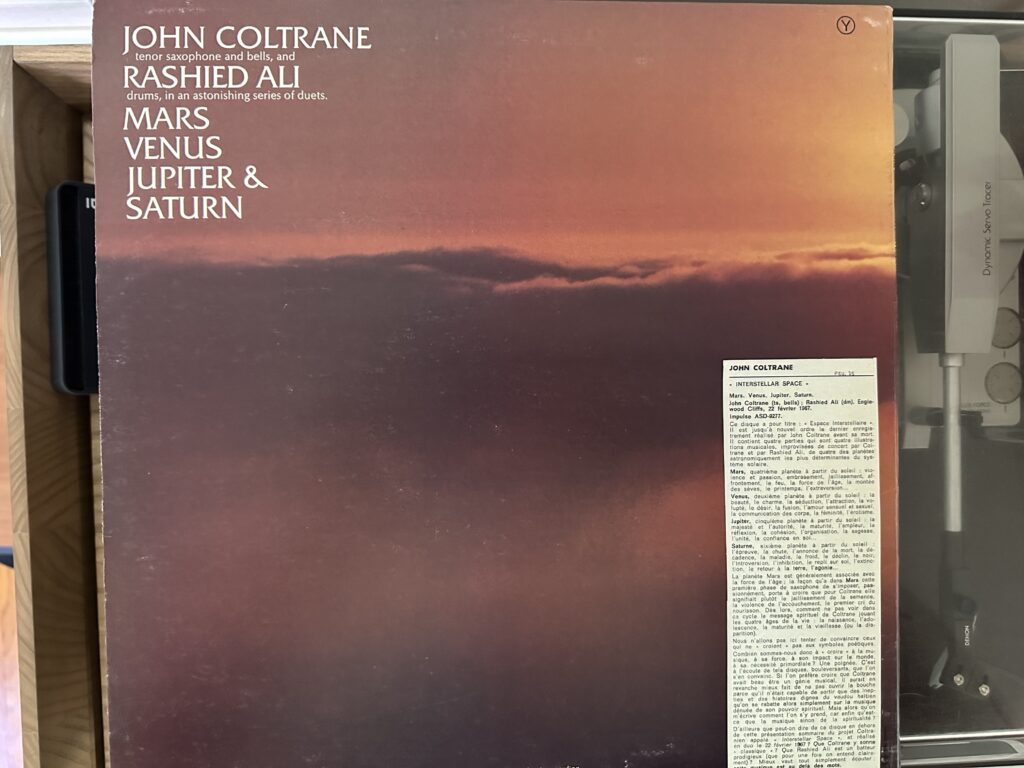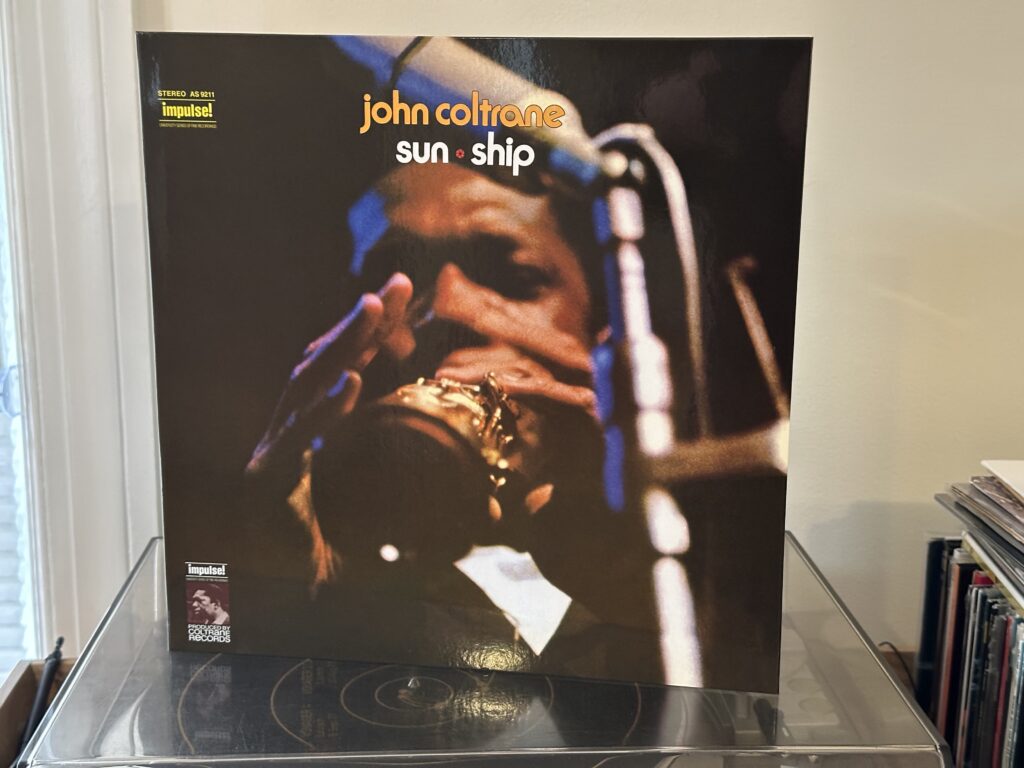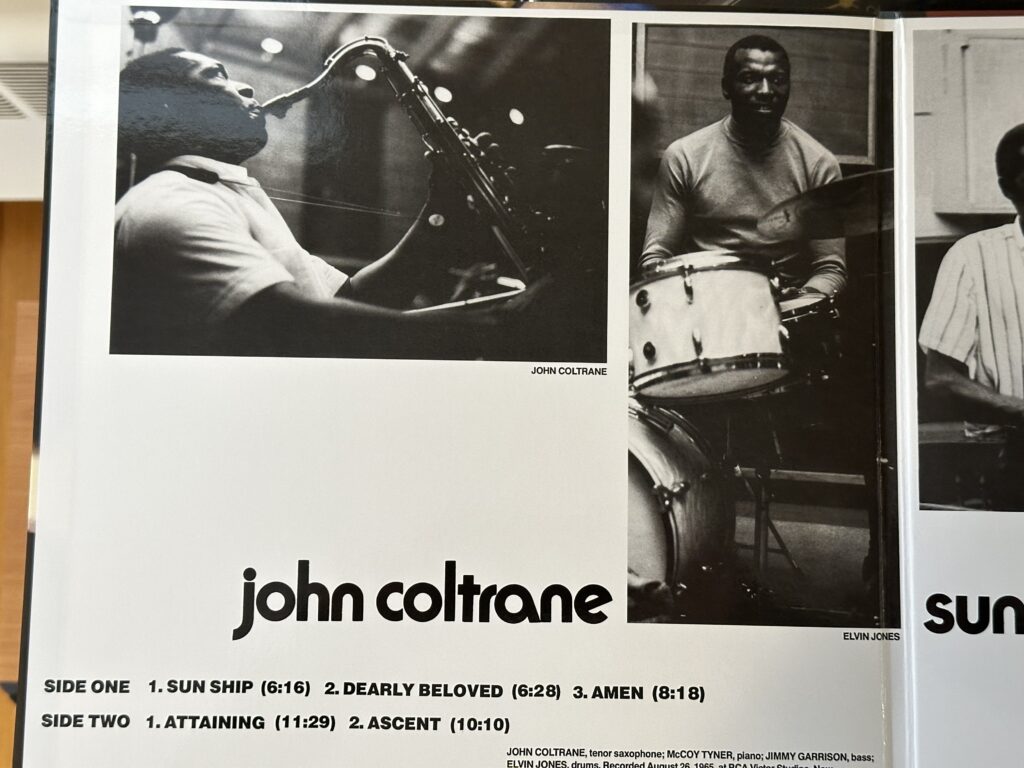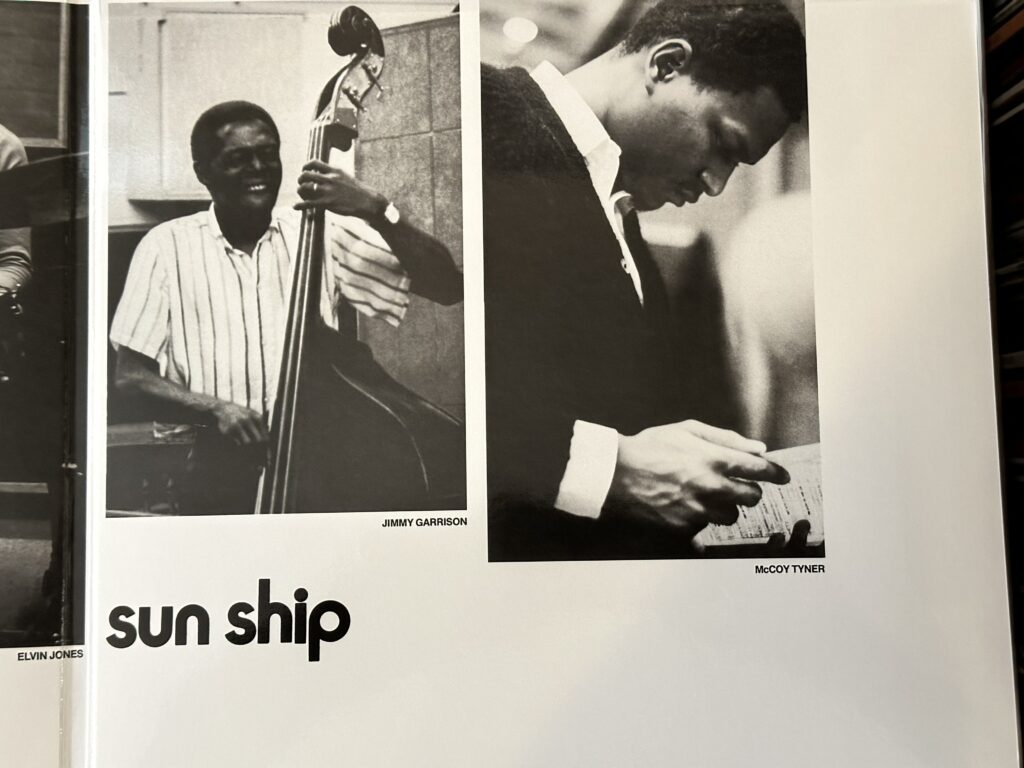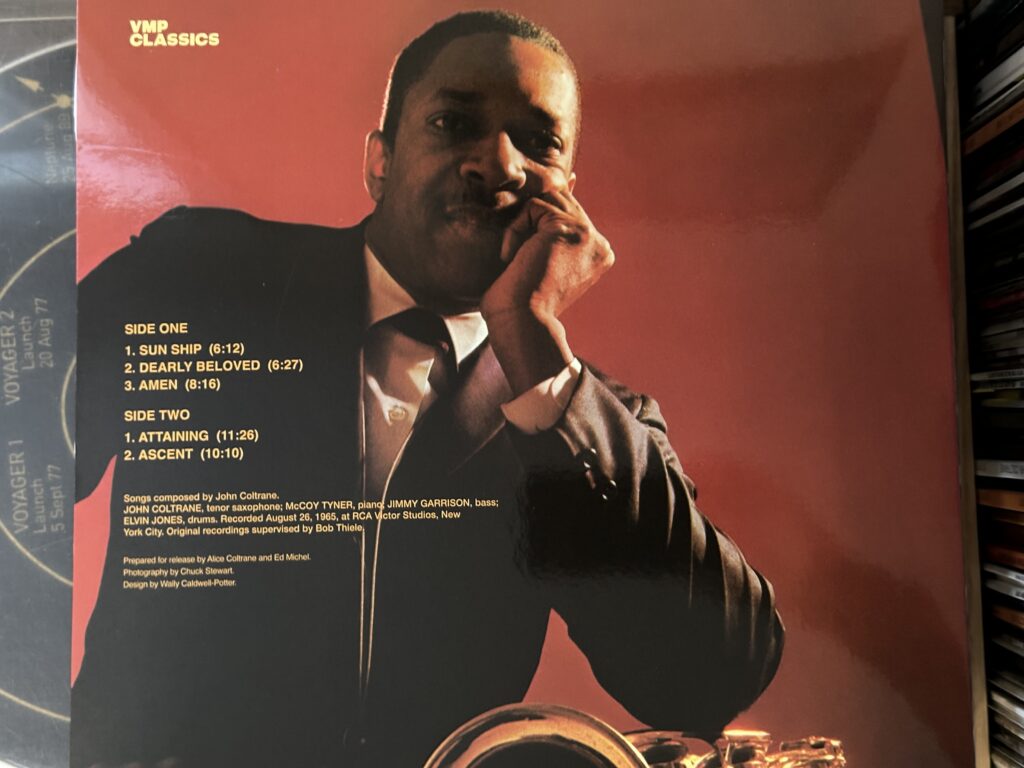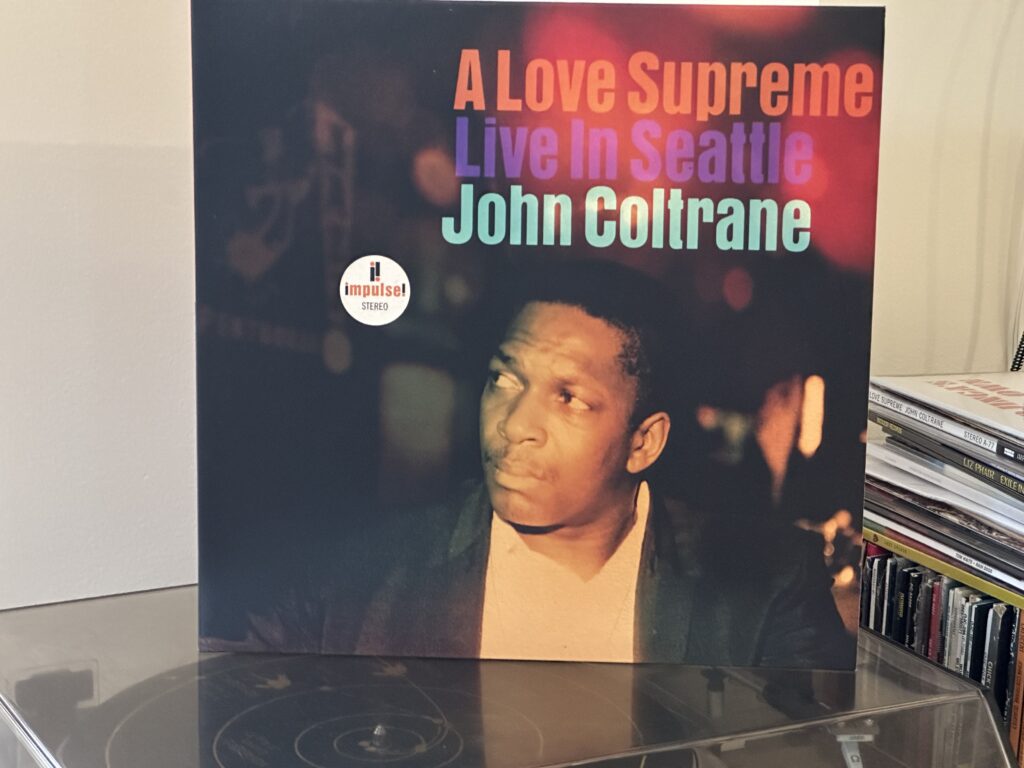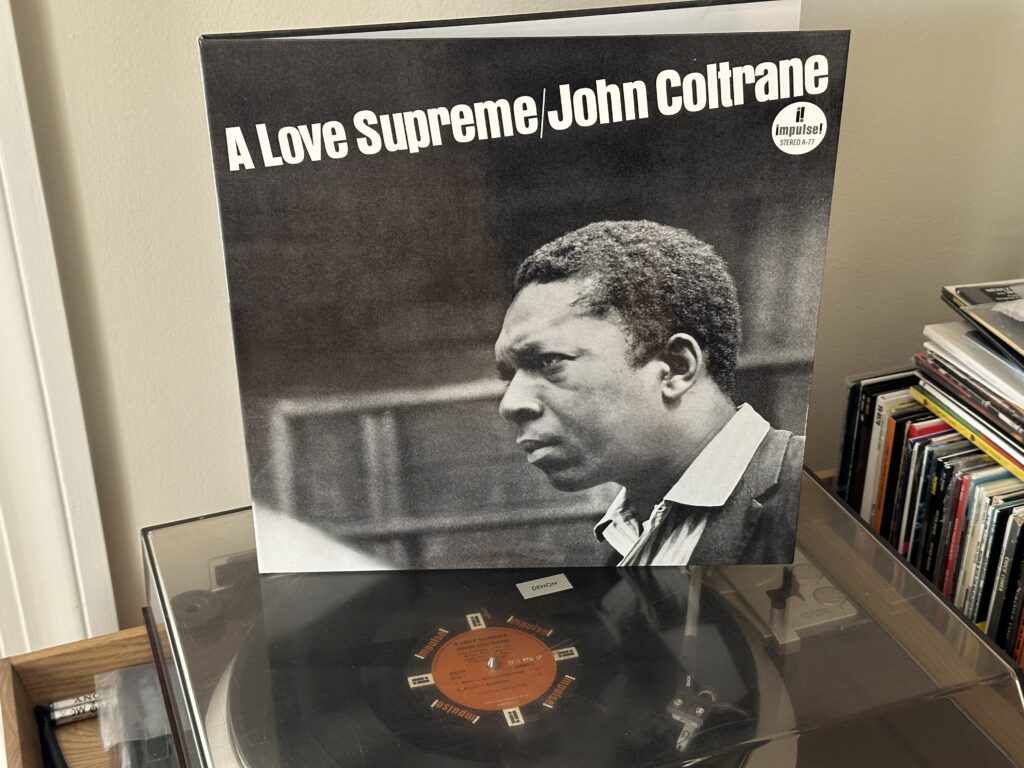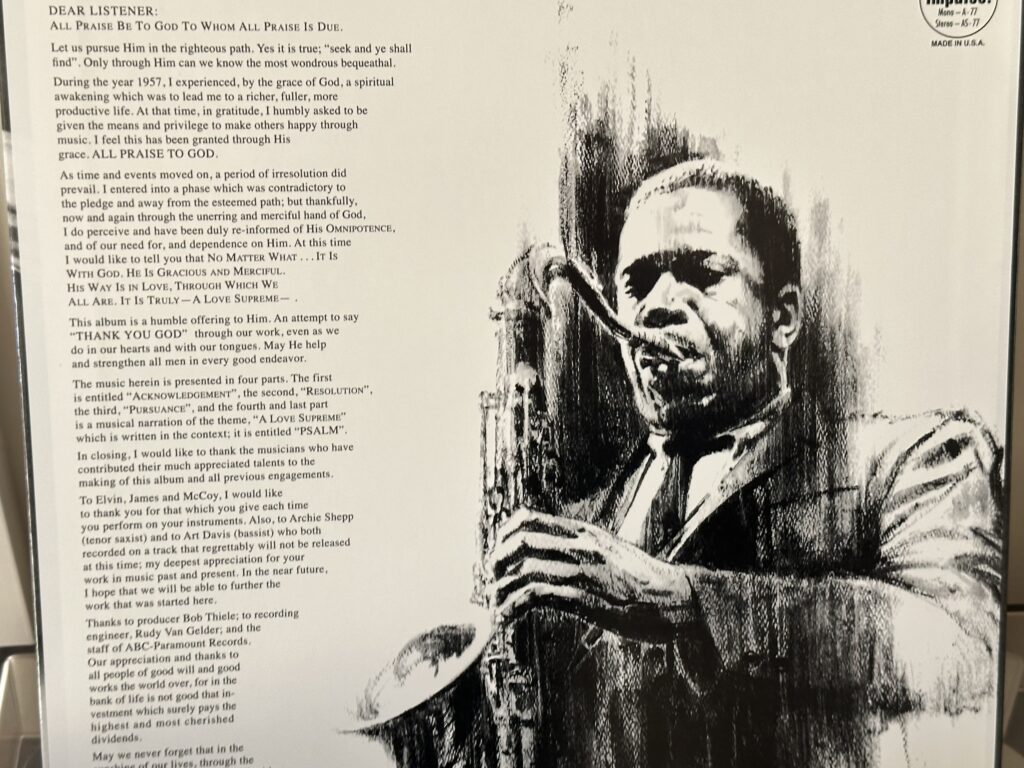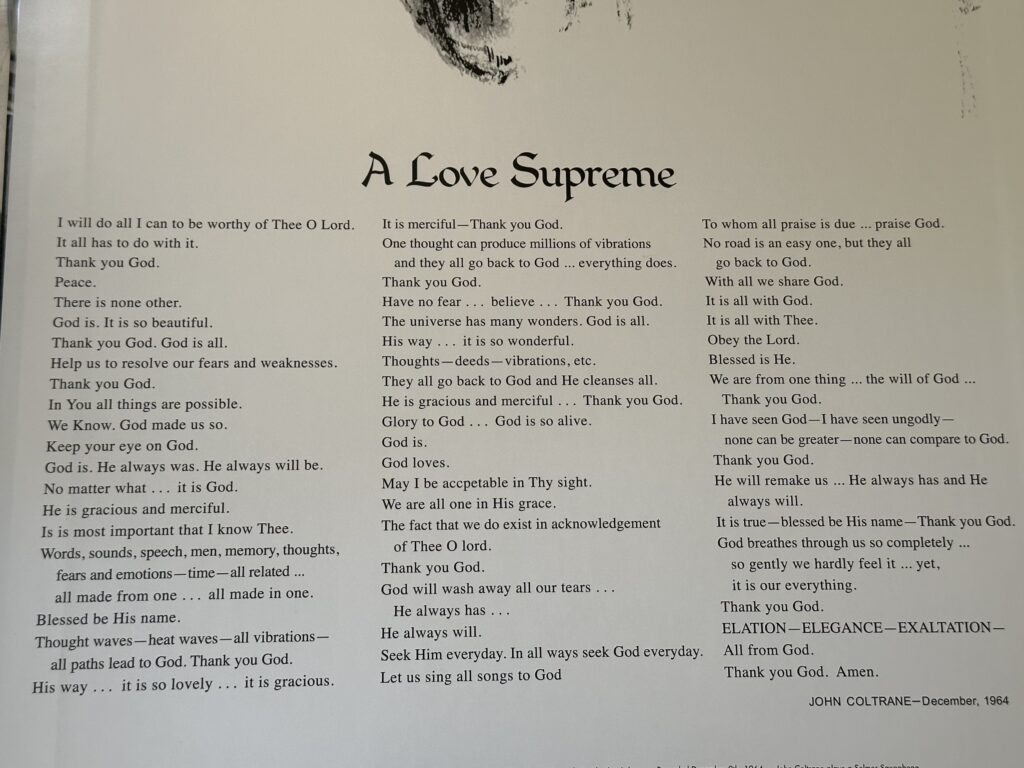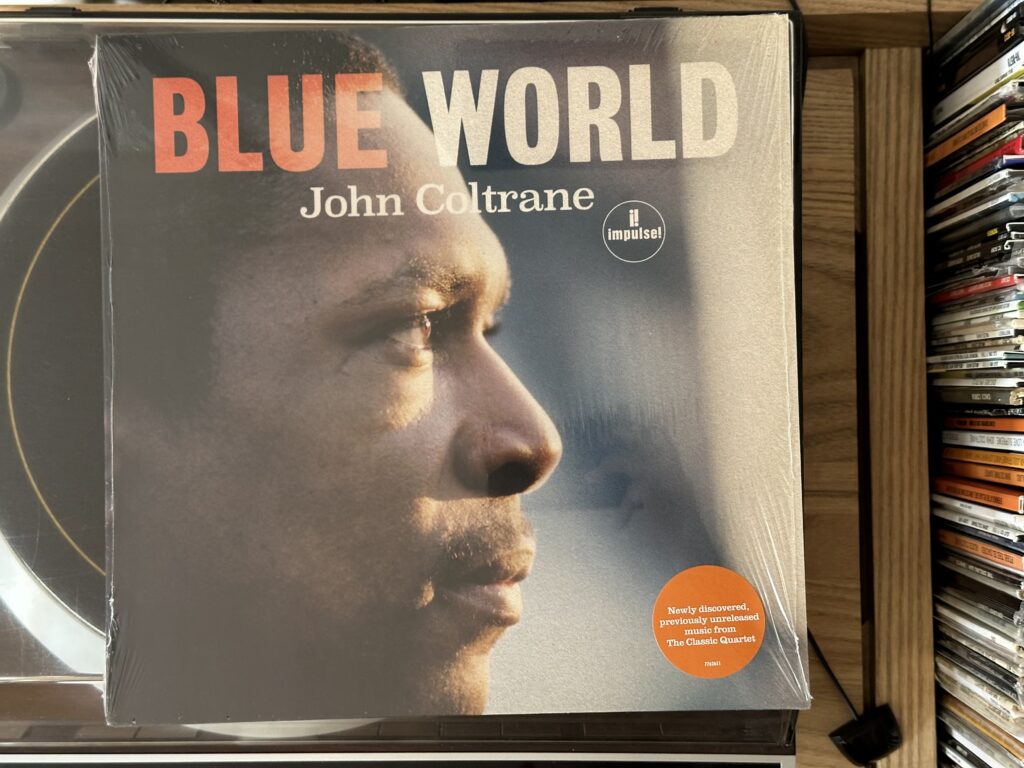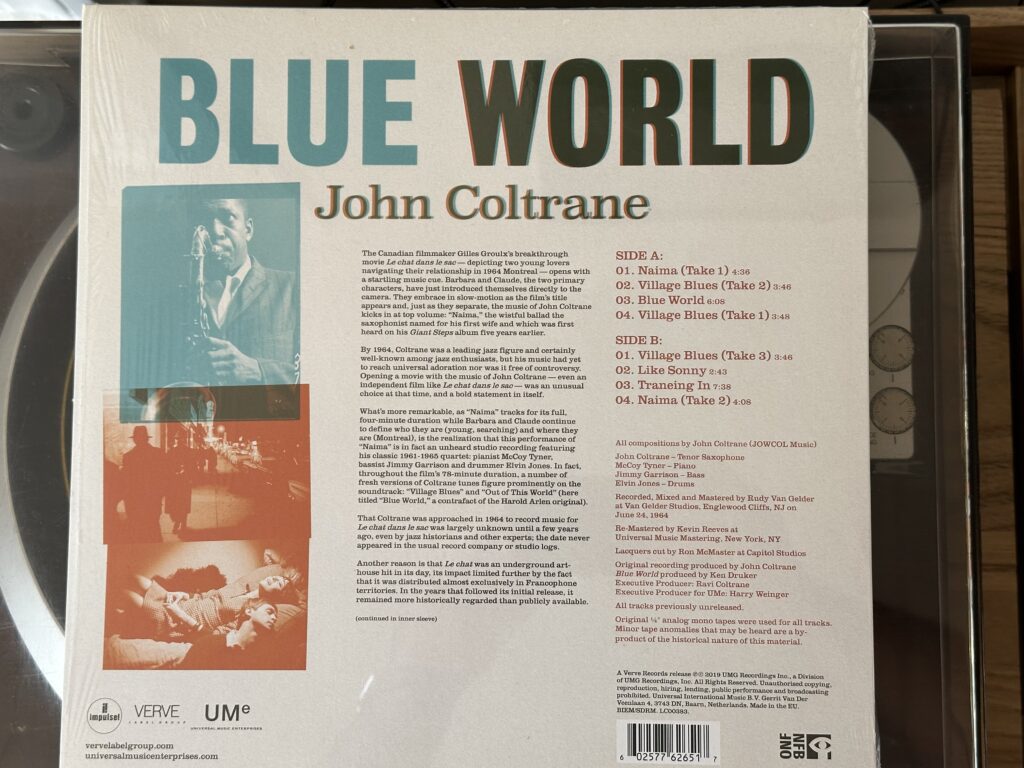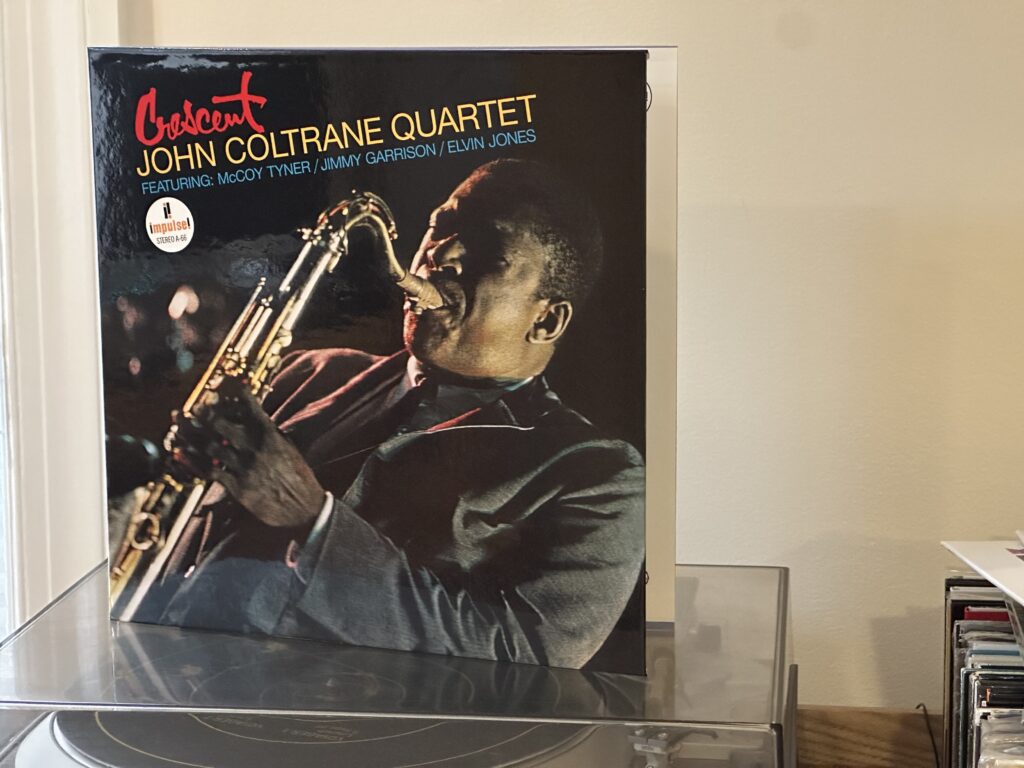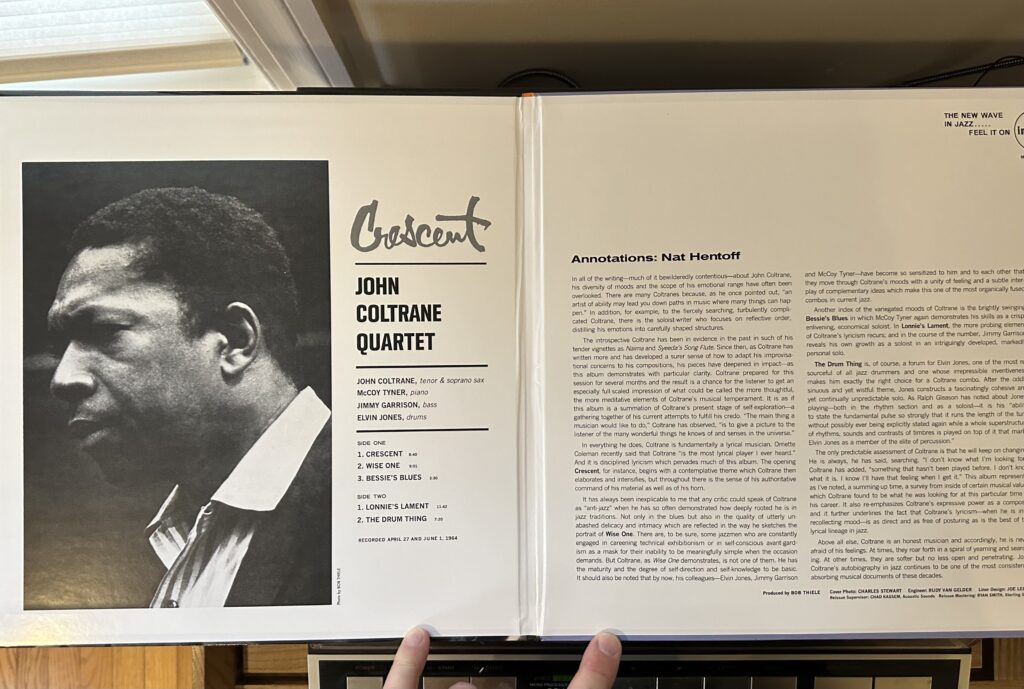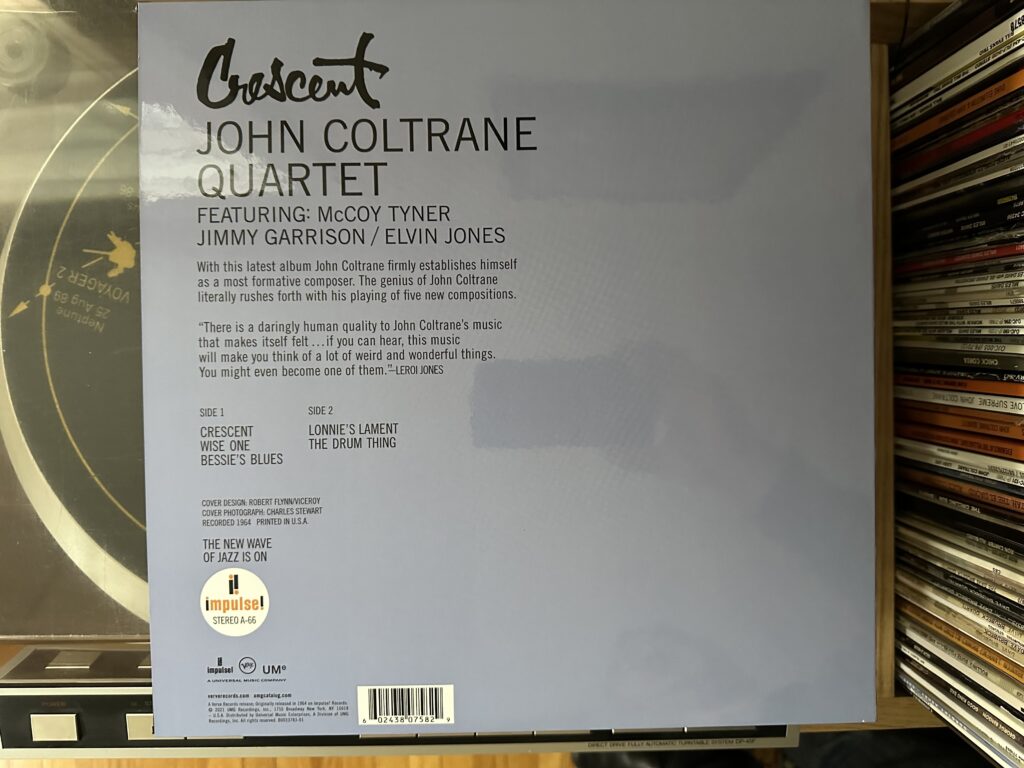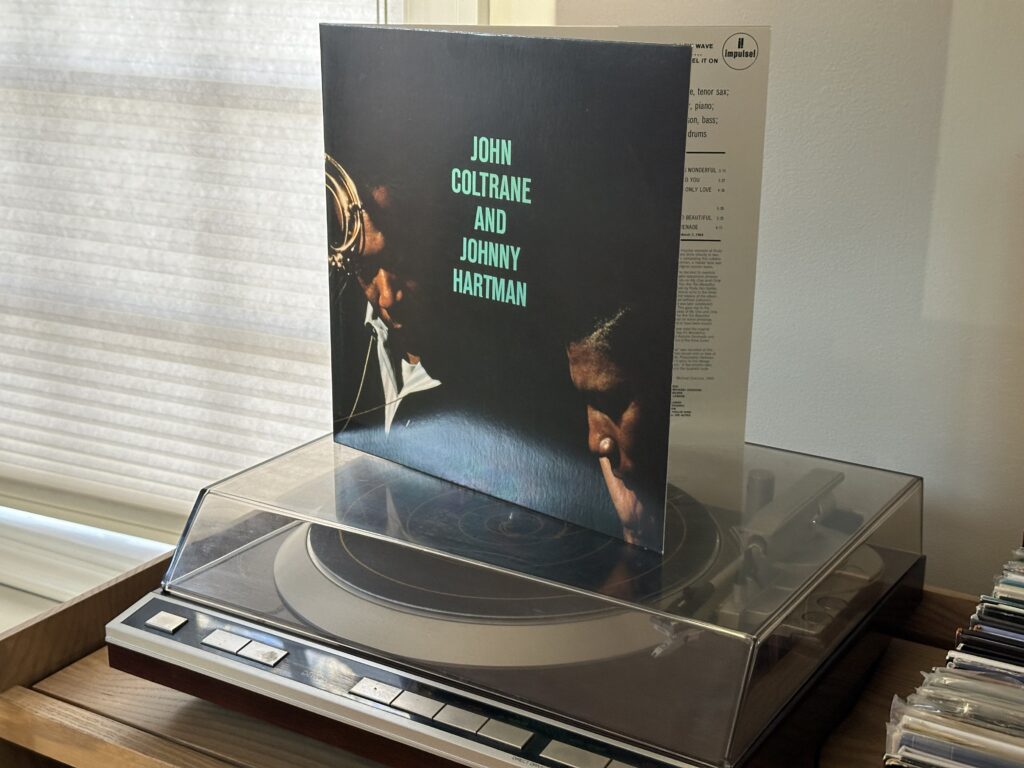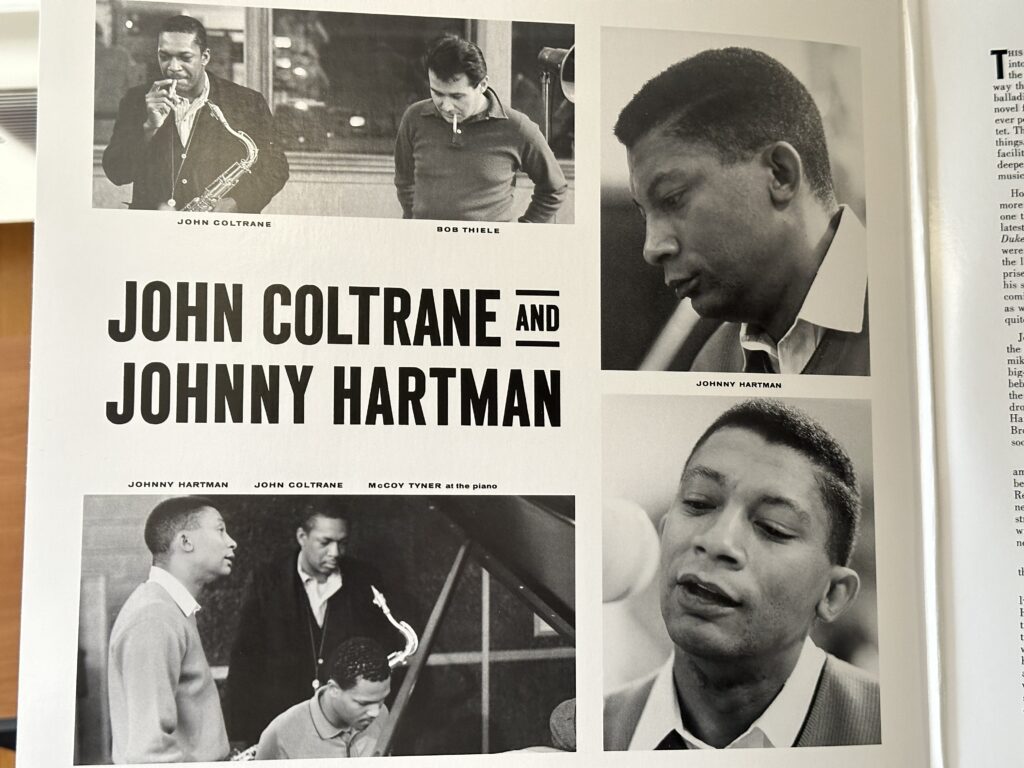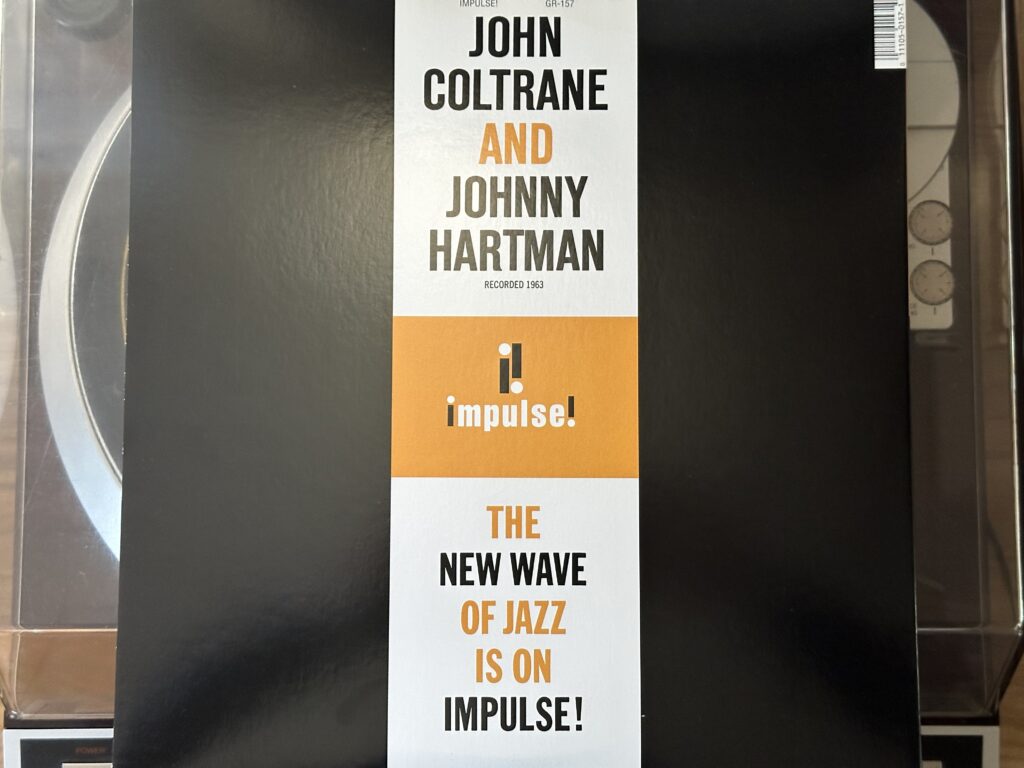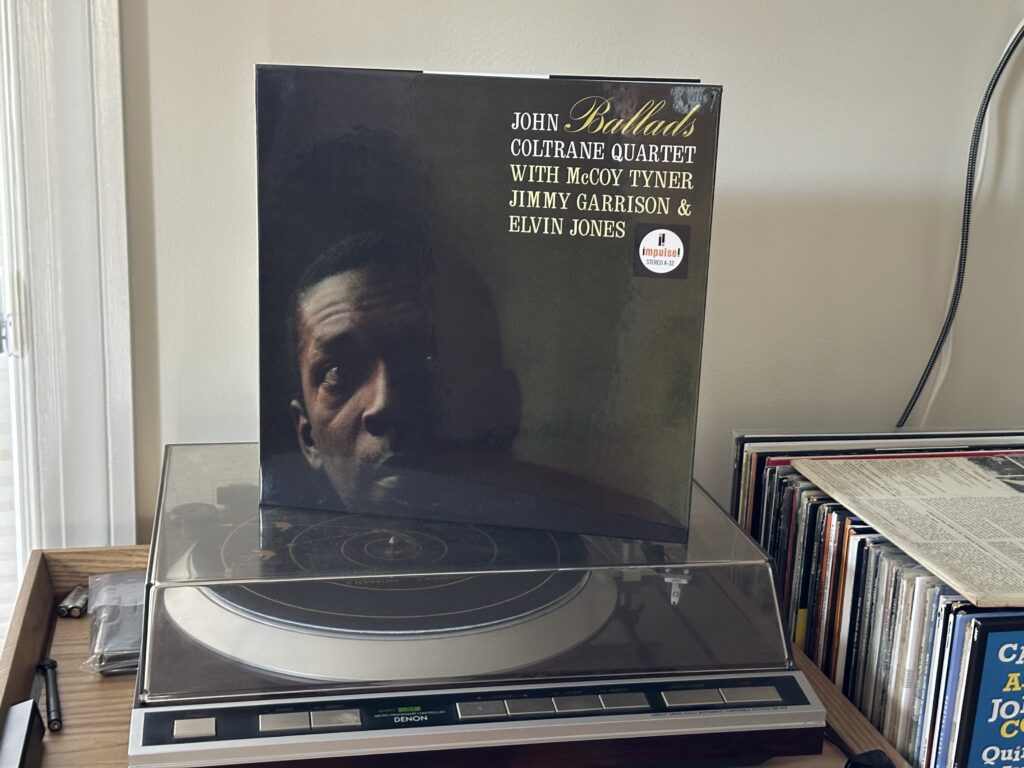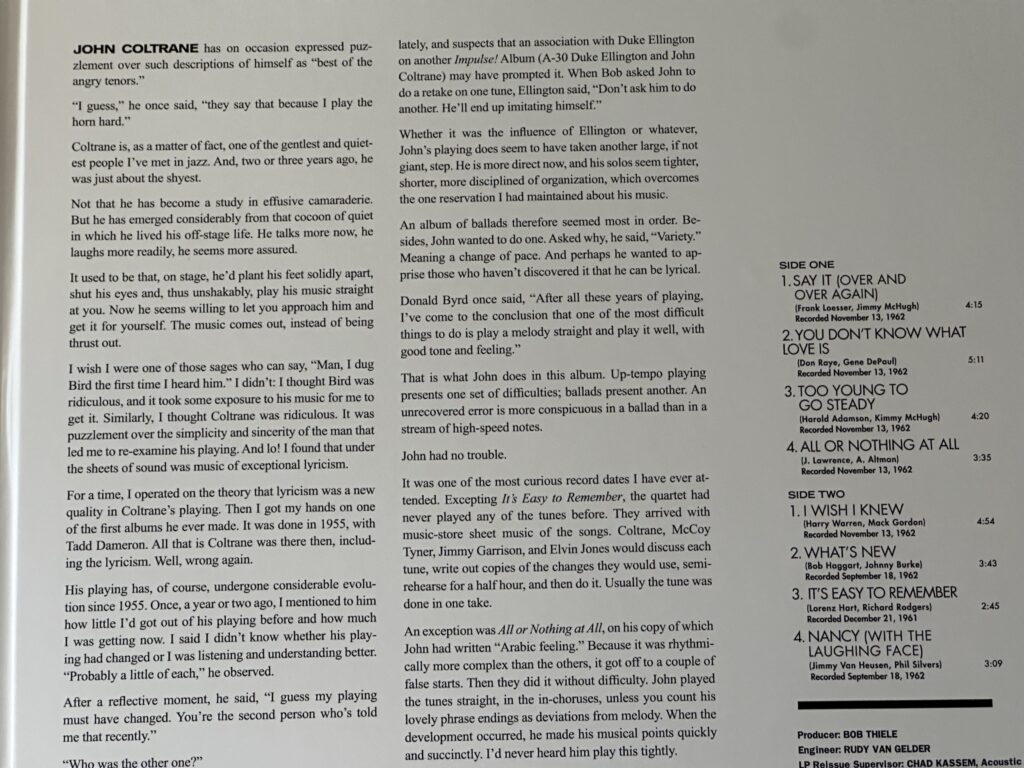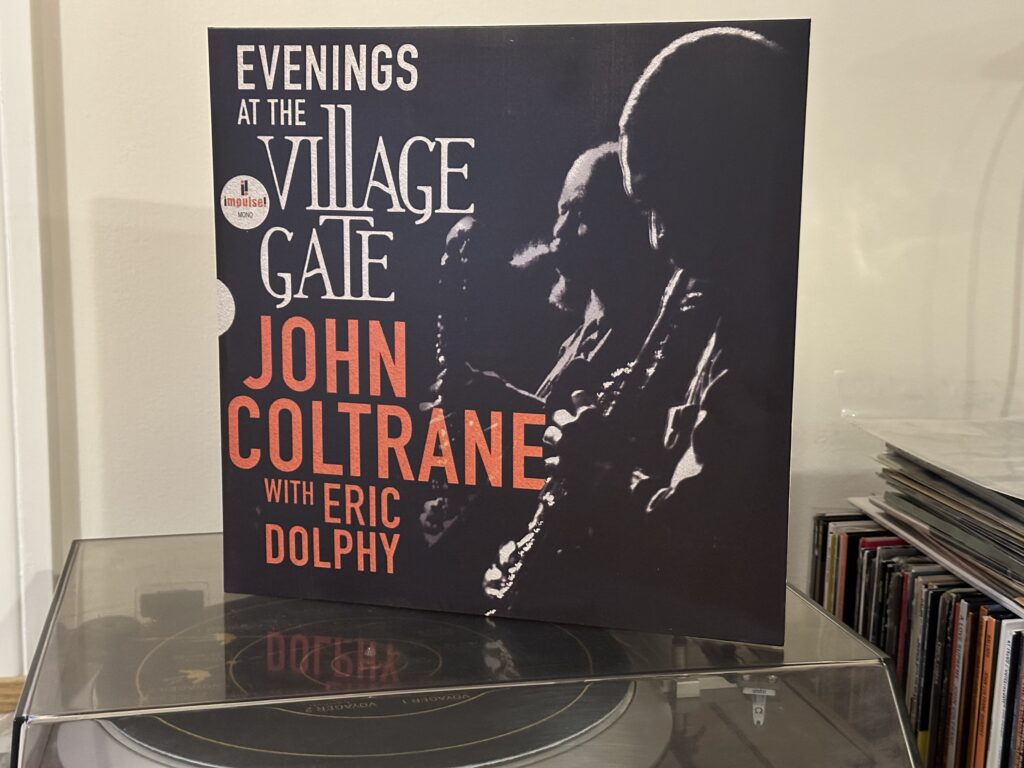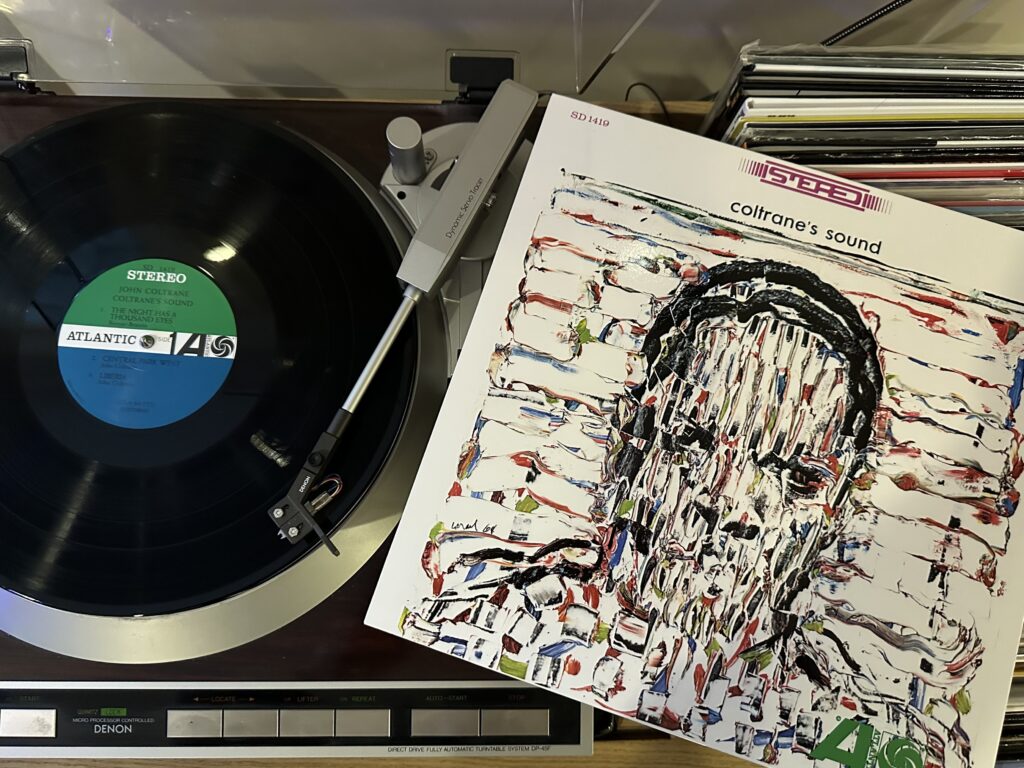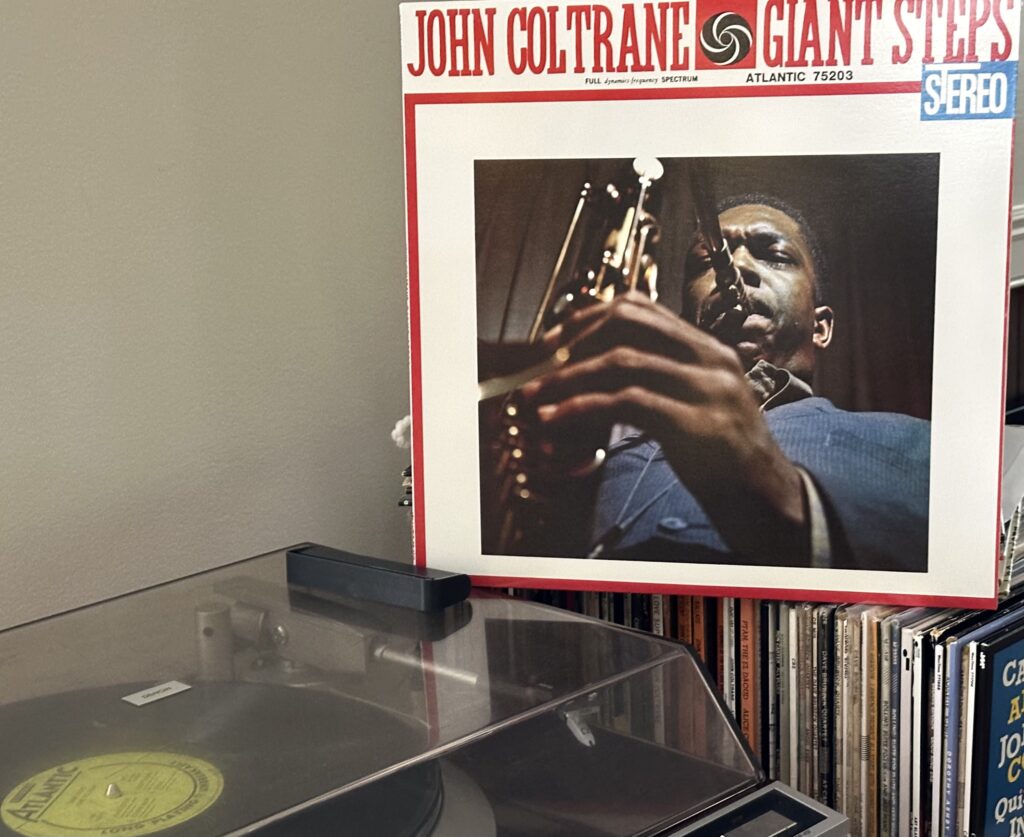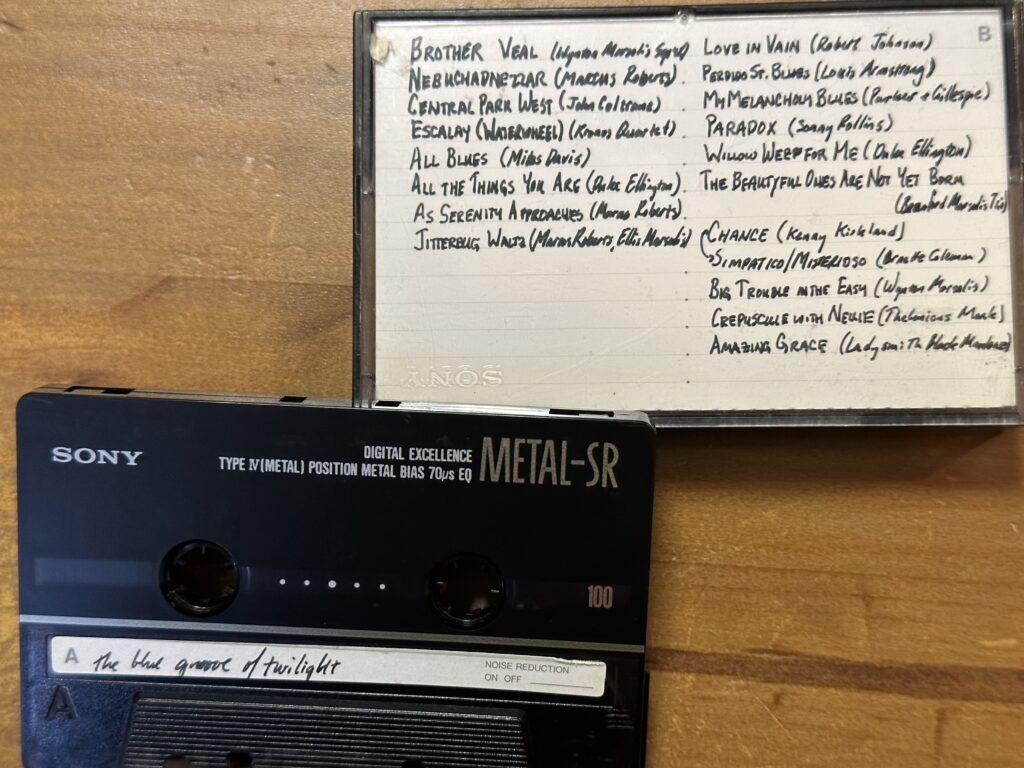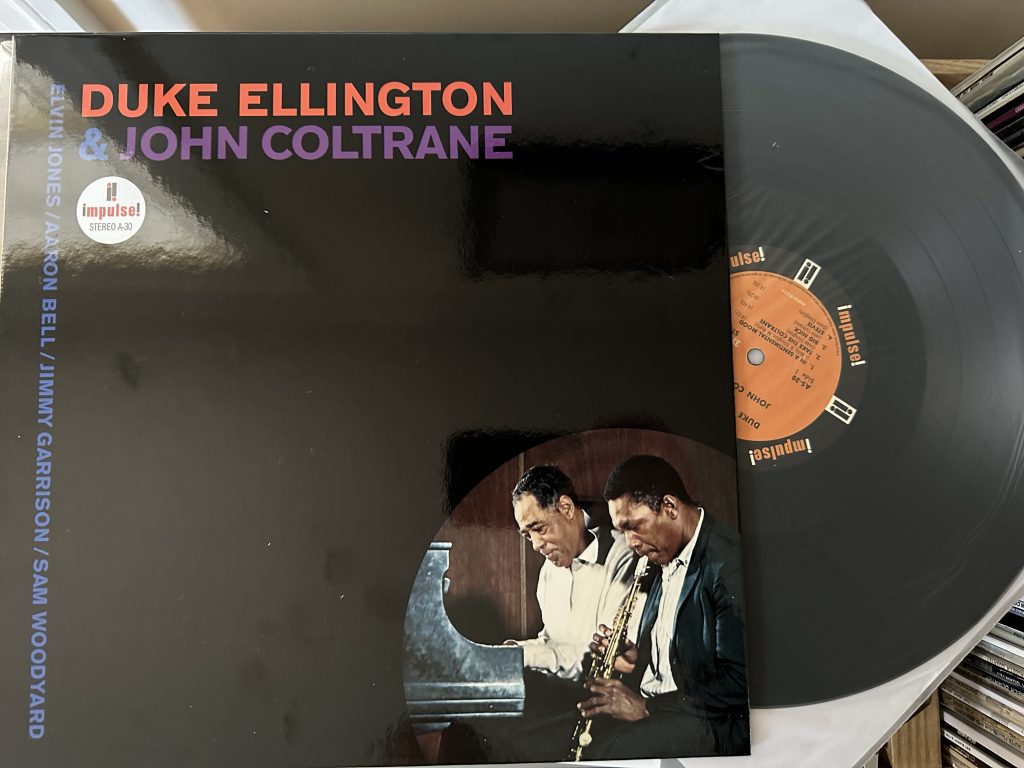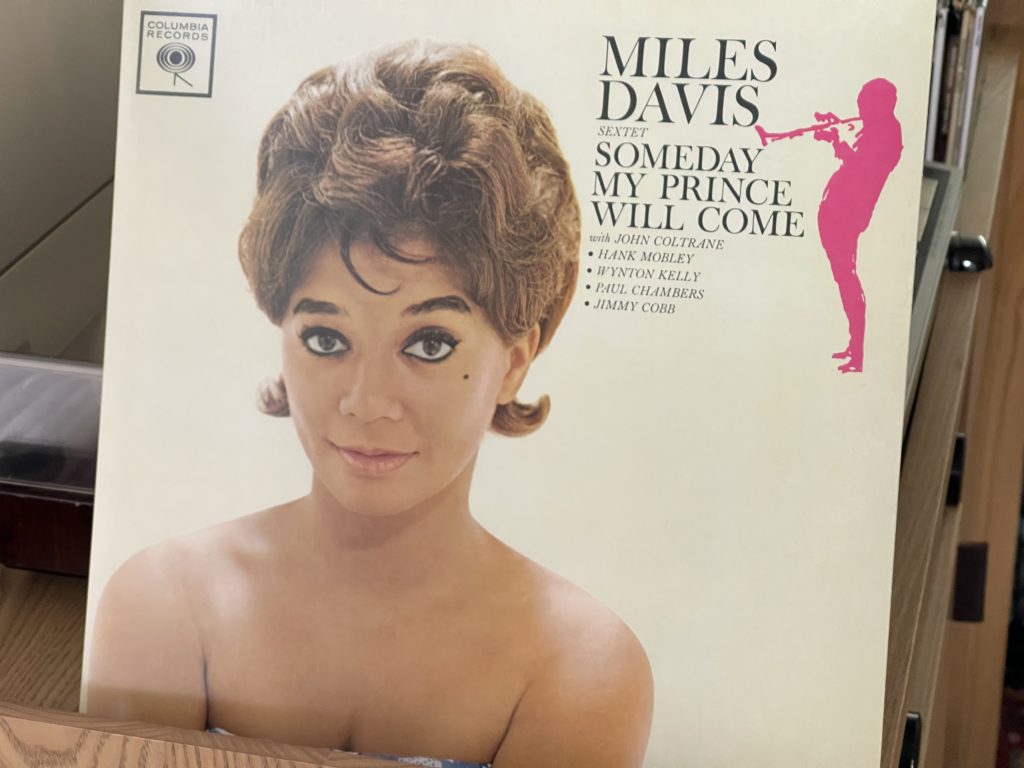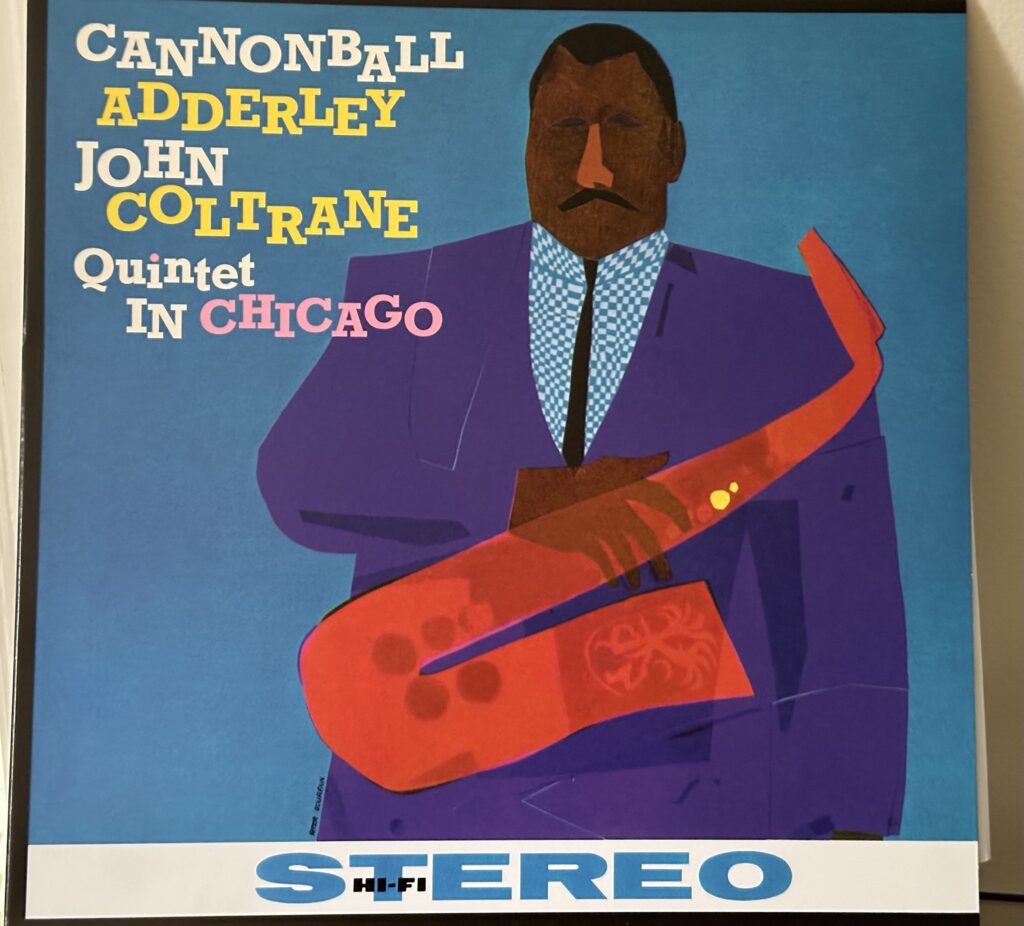
Album of the Week, August 31, 2024
Julian Edwin “Cannonball” Adderley surely has the best nickname (and the best nickname story) of almost any jazz musician. The story goes that as an elementary school student, he had such a voracious appetite that the other kids in the class called him a “cannonball”—aka a cannibal. Either version of the name seems appropriate; hearing him on stage barreling through his solos, he sounds both as though he’s been launched into orbit, and as though he’s hungry for more.
We’ve heard Adderley before, but always in the company of Miles Davis—whether on the great trumpeter’s best known album as part of his sextet, or on an album that, while issued under Adderley’s name, was really a Miles session. But Adderley was very much a bandleader in his own right, and a month before he entered the studio with Miles to start recording Kind of Blue, he was playing this session in Chicago with many of the same musicians. The rhythm section featured Paul Chambers on bass and Jimmy Cobb on drums, with Wynton Kelly on piano (who would substitute for Bill Evans on “Freddie Freeloader”). The second horn player was none other than John Coltrane, whose name is added to modern versions of the album (like my copy) but who was here strictly as a sideman. Together they entered a Chicago studio on February 3, 1959; all of them would head into the Columbia studio on 30th Street in New York City on March 2 to record with Davis.
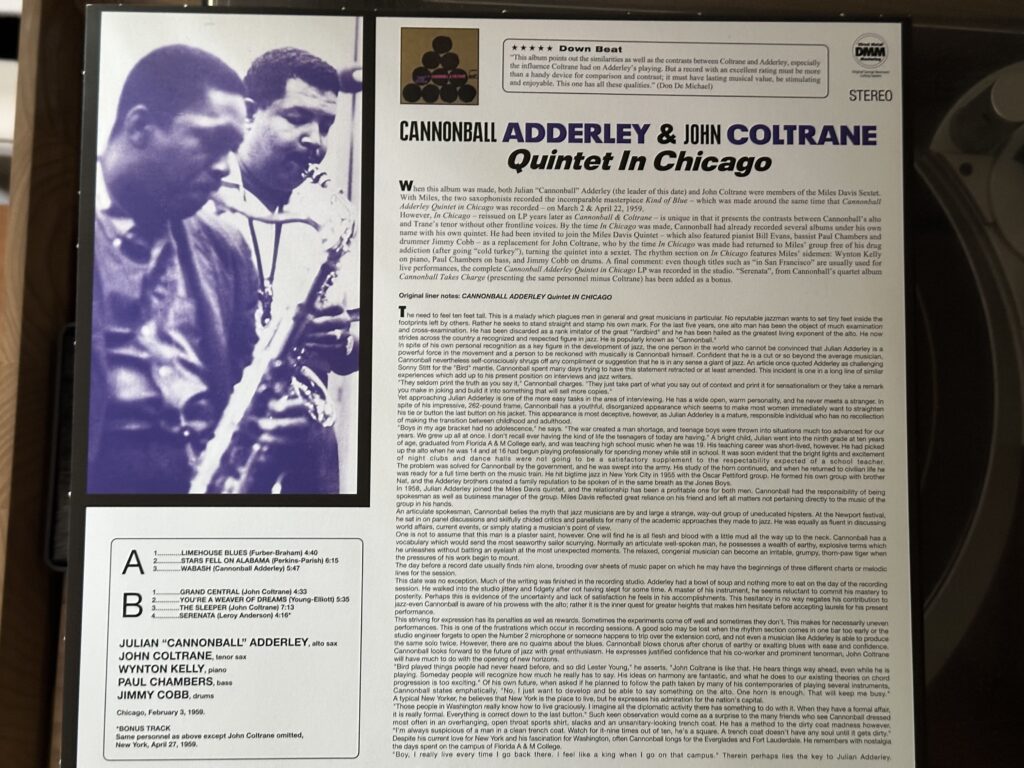
For coming so close before the landmark recording, there’s little of the modal masterpiece around the quintet here. Instead, we get a solid serving of straight-ahead jazz, starting with “Limehouse Blues.” The old British show hall tune gets a conventional reading right up until the end of the first chorus, when Adderley takes a flying run up into the stratosphere. In his solo he lays out a melodic trail that Trane, at first, refuses to follow, staying in the lower range of the tenor to emphasize the contrast between the two horns. But before long they’re both playing full out, in “sheets of sound” style, and the battle is a spectacular indication of just how talented both players were—especially as they trade fours at the end of the solos. The rhythm section is full out trying to keep up with the two of them, and Jimmy Cobb in particular eggs them on.
We’re in bluesier territory for “Stars Fell on Alabama.” Adderley’s blue playing is said to have been what led Davis to invite him to join his group, and it’s on full display here (Trane sits this one out). You can almost smell the smoke in the air, particularly in the second verse as he solos above the restrained sound of the rhythm section, here just a little bit of the high hat and Kelly comping the chords beneath. When Kelly gets his solo, he displays the versatility that would bring him into Davis’ band before leaving for a career leading this rhythm section as a trio; the melody gets a gentle airing before he takes it into higher realms, singing alongside in a manner not unlike Keith Jarrett’s style years later.
Adderley seems to have had quite the sense of humor about his nickname, as his composition “Wabash” suggests. The tune has flavors of a country dance and a 1950s sock hop rolled into one, but the solos are pure post-bop, especially Trane’s soaring flight above the chords. His descent down the scale in the second verse of his solo is breathtaking but almost insouciant, practically thrown away. He’s holding back the more dizzying blowouts that characterized his own works at the time; this session came less than two months before the first sessions for Giant Steps, but there’s little to betray what he would soon unleash. We get a great pizzicato solo from Chambers to round out the track.
“Grand Central,” one of two Trane originals on the album, gives us the feeling of being in the middle of the train station with the minor key melody which plays in parallel fourths between the horns. Adderley leads off with a fiery solo that explores the scaffolding that the chords build around the melodic line. Trane’s solo is a slower exploration of the lower end, at least until it bursts free into a flurry of arpeggios at the end. By comparison, Kelly’s solo is a more restrained statement, playing for just one chorus until the horns return to close out the track.
Trane gets a solo ballad statement on “You’re a Weaver of Dreams,” more in the spirit of the energetic ballads on Coltrane’s Sound than his more romantic sound heard on Lush Life. But it’s still a gorgeous sound, and one that’s over too soon. There are compensations aplenty, though, on the original closing track,“The Sleeper.” The other Trane original features a cockeyed minor key melody that has a built-in pause, as though the pianist falls asleep partway through! Trane and Adderley trade arpeggios over the rhythm section, which displays some of Kelly’s more soulful tendencies as he leans into blue notes throughout. Adderley gets the last word with an extended solo that extends over into the final chorus.
There have been a number of reissues of this album over the years; my copy, a 2010 European reissue, features Leroy Anderson’s “Serenata” as a bonus track. Recorded after Kind of Blue, on April 27, 1959 (five days after the second and last session), this is a quartet number with no Coltrane. Adderley’s playing is jaunty throughout with more than a hint of soul jazz throughout, foreshadowing the direction he would later take his groups of the 1960s.
In fact, Adderley’s best years were ahead of him. His early 1960s groups were stars, thanks in large part to the soul jazz originals penned by his new pianist, Bobby Timmons. He continued to play up until his unexpected death in 1975, at the age of 46. But he never played with Miles again following Kind of Blue. Next week we’ll hear how Miles’ group had evolved by 1960, with some of these same players plus a new saxophonist.
You can listen to this week’s album here:

